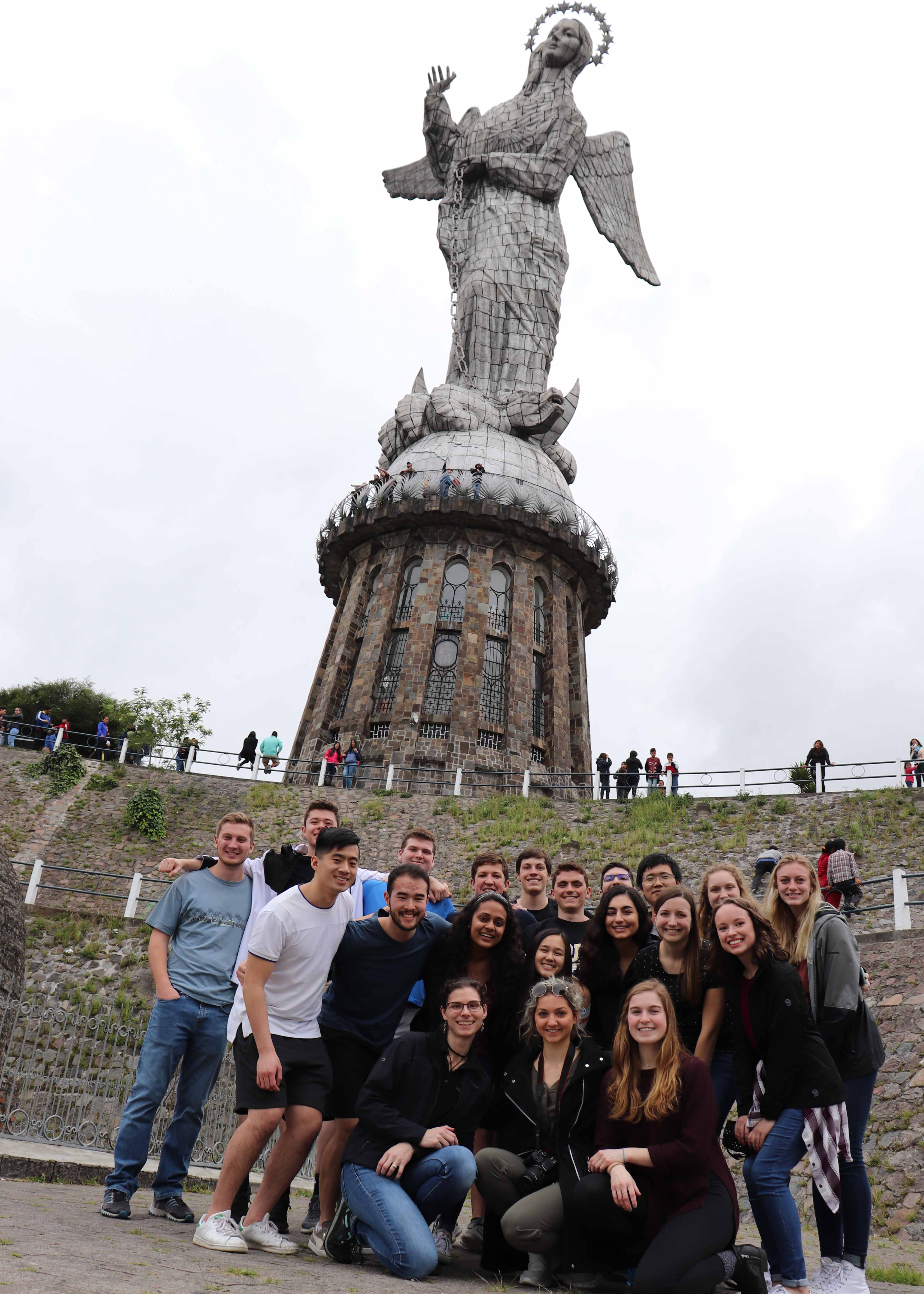Purdue medical-needs finding, design course travels to Ecuador over spring break

The experience was the in-country component of BME 395, a course designed to give engineering students hands-on experience working directly with patients, clinicians, and non-profit institutions to develop user-friendly technologies specific to medical needs in low-resource settings. Jacqueline Linnes, Marta E. Gross Assistant Professor of Biomedical Engineering, teaches the course.
Universidad San Francisco de Quito (USFQ) hosted the team of twenty Purdue students studying biomedical, chemical, mechanical, and materials science engineering, as well as one first-year engineer. The students have been preparing for the trip all semester, and chose one of three unmet medical needs to address:
- Universal Crutch of the Future: Inspired by a medical doctor who experiences reduced mobility as a result of polio, the team was tasked with developing a device that would not only provide stability, but would be ergonomic and support his mobility on stairs. The team was advised by Andrés Caicedo, professor in the USFQ School of Medicine, and product designer Roberto Gallo from Fab Lab Zoi. In three days, the team designed, fabricated, and tested a prototype crutch.
- Prosthetics for Puppies: In Ecuador, many domestic animals have lost limbs as a result of being run over by cars. The students on this team were tasked with building a prosthetic for a puppy that had lost a leg. Advisor Patricio Chiriboga, a professor at USFQ, regularly engages in this type of service project and lent his expertise to the students as they designed a prosthesis, 3D-printed prototypes, and tested them with puppies.
- Power for Prosthetics: Human-machine interfaces are driving changes in prosthetic and orthotic devices. This team developed modules to support the next generation of wireless-powered robotic prostheses.

The students also traveled to Cuenca where they spent three days developing low-cost technologies for centers that work with infants and children and adults who have learning disabilities. The students collaborated with engineering students at the University of Cuenca to build devices to help participants focus and improve visual acuity.
“Our students worked really hard,” said Linnes, adding that they started early in the morning, were busy all day, and had homework late into the night. But that one intense week imparted lessons that will last a lifetime. The students learned what it takes to understand unmet medical needs in low-resource settings, developed intercultural competencies to be successful engineers in those settings, and worked in multicultural teams to develop functioning prototypes.
The work could have far-reaching impact. “If you design your solution right, the technology that you are making for a low-income, low-resource setting will be useful here,” said Linnes, referring to domestic settings. That’s the idea behind the “global to local” movement. “If you are designing well for a global project, it will translate back to low- and even high-resource settings in the U.S to reduce health disparities and costs.”
BME 395 is the only short-term service learning/study abroad course offered by the Weldon School of Biomedical Engineering over spring break, but the school highlights several other study abroad experiences in Ireland, China, and Denmark. Check out the school’s study abroad page for more information: www.purdue.edu/BME/Academics/Undergraduate/StudyAbroad.
